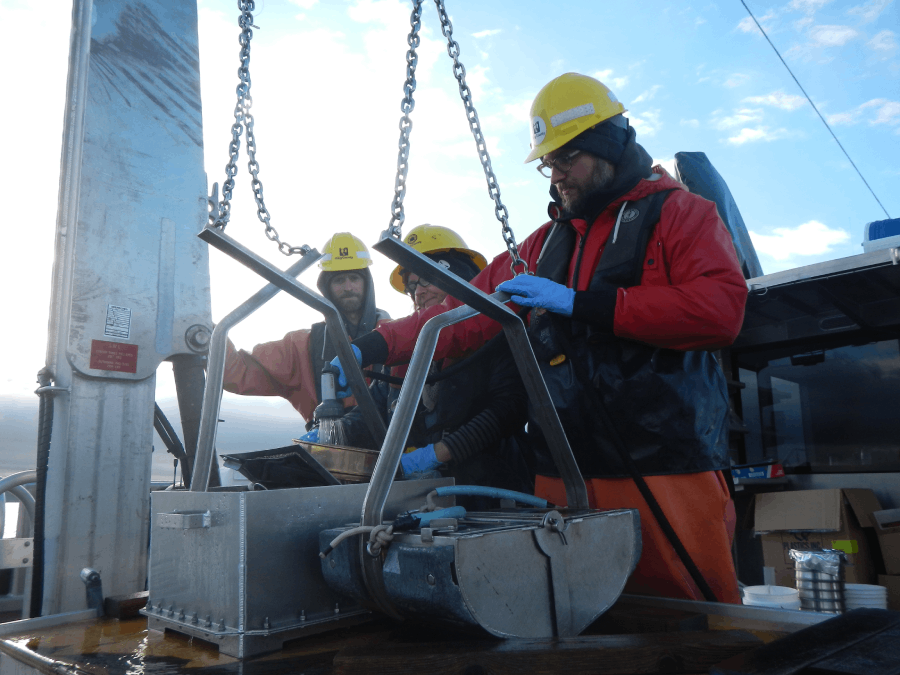Subtidal (Offshore) Sediment Chemistry

Subtidal (offshore) marine sediment samples have been collected consistently from some sites since 1985. Since then, sites have been added or removed, and the frequency of sampling has changed over time. We currently monitor sediments at 18 sites within King County's borders. Every two years we sample either eight sites in Elliott Bay or 10 sites in the Central Basin outside of Elliott Bay.
The top 2 or 10 centimeters of sediment is collected for chemistry analysis by a dual van Veen grab sampler. Next, the King County Environmental Lab analyzes the samples for physical and chemical parameters, including total solids, total organic carbon, grain size, metals, and a group of organic compounds. We analyze the 47 chemicals of concern listed in Washington State’s Marine Sediment Management Standards (SMS) (Chapter 173–204 WAC) as well as additional metals and organic chemicals. Annually, additional samples are collected from a subset of 6 sites and used to assess the benthos (organisms living within the sediment).
More Information
The primary goals of this monitoring are to:
-
Identify differences in sediment chemistry between sampling locations, including those outside of King County tracked by other agencies.
-
Track changes in sediment chemistry between sampling years.
-
Compare chemical concentrations to current marine sediment quality standards.
Supporting goals of this monitoring are to:
- Use information about water quality and sediment chemistry to better understand differences in the benthic community.
- Use sediment chemistry data to better understand the potential relationship to fish and crab tissue chemical concentrations.
| Parameter Type | Parameter | Method* |
|---|---|---|
| Conventionals | Total solids | SM 2540-G |
| Particle size distribution | ASTM D422 | |
| Total organic carbon | EPA 9060 (SW-846); PSEP, 1996 | |
| Metals | Mercury | EPA 7471B (SW-846) |
| SMS metals (arsenic, cadmium, chromium, copper, lead, mercury, silver, zinc) | 3050B/6020B (SW-846) | |
| Aluminum, iron, selenium | 3050B/6020B (SW-846) | |
| Organics | PAHs | EPA 3550C /8270E (SW-846) |
| Phthalates | EPA 3550C /8270E (SW-846) | |
| PCB Aroclors | EPA 8082A (SW-846) | |
| SMS chlorinated semi-volatile organics | EPA 3550C /8270E (SW-846) | |
| SMS misc. non-polar organics | EPA 3550C /8270E (SW-846) | |
| SMS polar organics | EPA 3550C /8270E (SW-846) | |
| PBDE congeners (types or forms) | EPA 3550C /8270E (SW-846) |
*For more details on methods and detection limits refer to the most recent sampling and analysis plans.
SMS = sediment management standard
Download Data
Download data from our online database.
Note: some data may be provisional. Contact MarineWQ@kingcounty.gov for information about the most recent quality control of data.
Documentation
Learn more about our program by reading documents such as the latest sampling and analysis plan and read relevant reports and presentations.
Contact us with any questions or access additional resources in the Science Section Library.

 Translate
Translate